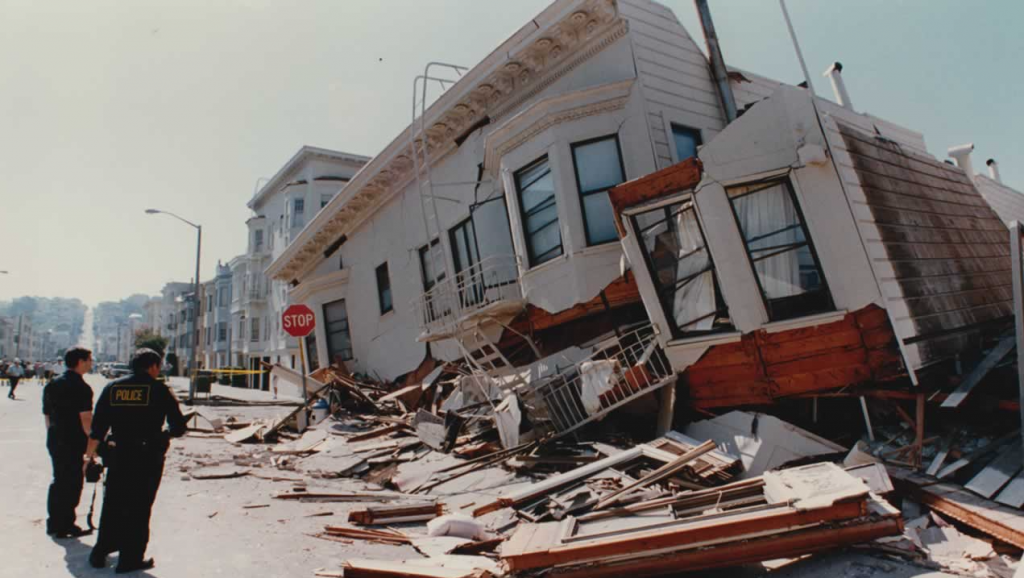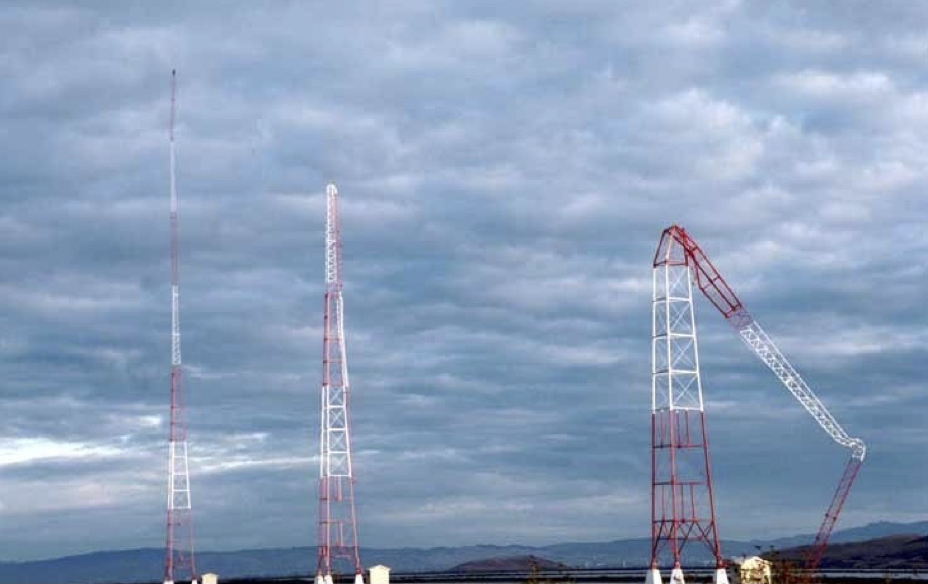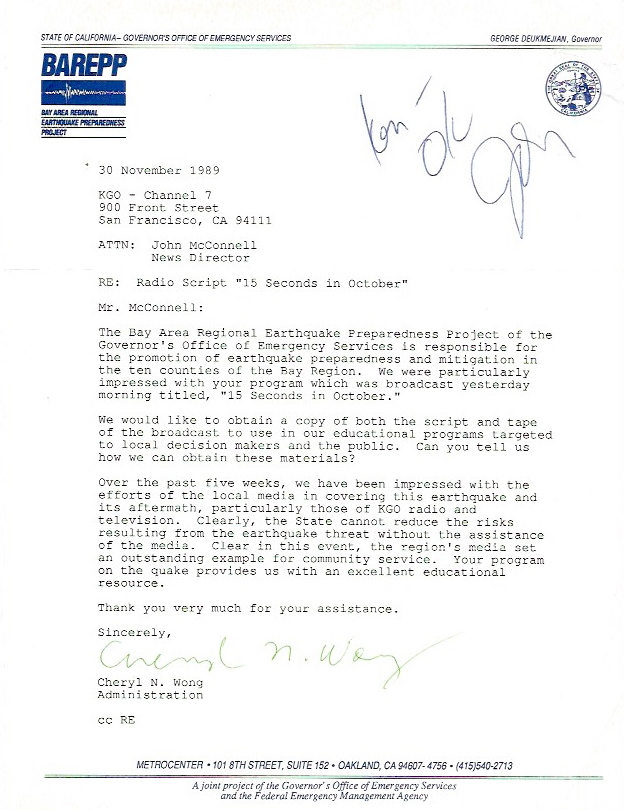
15 Seconds in October: The 1989 San Francisco Earthquake
October 17th was a goof-off day. The San Francisco Giants were playing their first home World Series game after losing the first two across the Bay in Oakland. The Giants and A’s were both carried by other radio stations. No matter which team won, KGO was going to lose. Probably 60-70 percent of the radios would be tuned to our competitors. No one was listening to us.
Many of the station’s managers were at the game. Those who couldn’t go, left early to catch the later innings at home. It was shortly after five; I was producing the afternoon news and the opening ceremony was showing on the bank of TVs in the newsroom.
There was no mistaking what was happening when it hit; you could hear it before you could feel it. It started as a distant rumble and built until the raw energy swept through the building like a wave. An acoustic ceiling panel above me become unhinged and the metal grid swung down barely missing my head. I pushed my fellow producer Franco Gianelli out of the way and dove under the desk.
The lights went out and then on again when our emergency generators kicked in. There was a moment of total silence followed by a deafening wail of sirens, alarms and warning beeps. Chaos and fear overtook the newsroom. I turned on a portable AM radio that was always nearby and realized we were off the air. The mighty KGO had been silenced.
We had been hit hard. If it wasn’t THE BIG ONE, it was close enough. KGO’s Stan Burford flying in our traffic plane and Katy Leaver in the KGO helicopter began seeing the extent of the damage. The off-air exchange between Stan, Katy, our reporters in the field and the news desk over the KGO 2-way system is riveting radio even though it wasn’t discovered until someone checked the tapes much later.

When we got back on the air, our reporters were in place and the grim details continue to emerge.
KGO’s Robin Bertolucci was buying mice at the East Bay Vivarium when the Cypress section of Highway 880 collapsed outside the door. She rushed outside to see if she could rescue anyone, but the damage was too cataclysmic. She returned to the store, walked through the broken tanks and aquariums, brushed aside lizards and snakes and used the store’s telephone to call station with a chilling eyewitness report.
Steve Walsh reported on several brick buildings that had collapsed at 5th and Bluxome not knowing his own apartment in the Marina District had been damaged.
Gene Rusco in the South Bay found damage from Palo Alto to Watsonville. Greg Edmonds reported on the search for people trapped under the collapsed 880 freeway.
Food was brought in and we prepared for a long siege. Everyone pitched in. My wife showed up and she immediately joined other members of the staff including assistants and salespeople in answering the phones and helping out.
Sometime before dawn, I snuck out for about 45 minutes. I had been coordinating our coverage for over eight hours, but it all seemed remote. I wanted to see what was happening first hand.
I walked down to the Ferry Building and was struck by the dark silence. The lights were out over most of the Bay Area and I remember the air was unusually warm and still. I did a live report in front of the Ferry Building making the connection to the key role it played in the 1906 earthquake. The building was red-tagged. Fallen plaster, molding, masonry and brick covered the sidewalk. I interviewed several people who told incredible stories that never aired because of all the other incredible stories.
I was criticized for leaving the desk, but looking out over the San Francisco waterfront gave me the perspective and the inspiration to go on.
I worked through the night before going home for some sleep. I took a detour through the Marina District on the way home. I could see people lined up outside an emergency shelter at the Marina Middle School. Giant bursts of flames shot through a rupture in the sidewalk. On Cervantes Street, rescue crews worked to clear debris by hand and set giant jacks to lift a collapsed house.
We had bought a house in San Francisco’s Excelsior District ten months earlier. Fortunately it was on bedrock and survived with barely a picture knocked off-center. Ann said she barely felt it.
I kept my time sheet from that night. I worked an average of 16 hours a day for the first three days after the earthquake.
I decided we had so much great raw material that it should be turned into a documentary that I hoped would be a definitive account of the earthquake and its aftermath.
I used material from KGO Radio and TV as well as ABC. I also did original reporting and broke stories on the massive failure of San Francisco’s emergency response effort. I knew as I was doing it that this would be one of the highlights of my career. Fortunately, a story of this –um – magnitude, doesn’t happen very often.
The one-hour documentary “15 Second in October” originally aired on November 29, 1989, six weeks and one day after the Loma Prieta earthquake. It told the stories of the earthquake victims and heroes. It won awards from the Radio and Television News Director’s Association, Sigma Delta Chi, The National Headliner’s Club and others
On October 17, 2009, KGO reran “15 Seconds in October” on the 2
0th anniversary of the Loma Prieta earthquake. Three decades later. I’m still as proud of that documentary as anything I’ve ever done.

“15 Seconds in October” originally aired live on November 29, 1989 on KGO Radio and the ABC Radio Network.